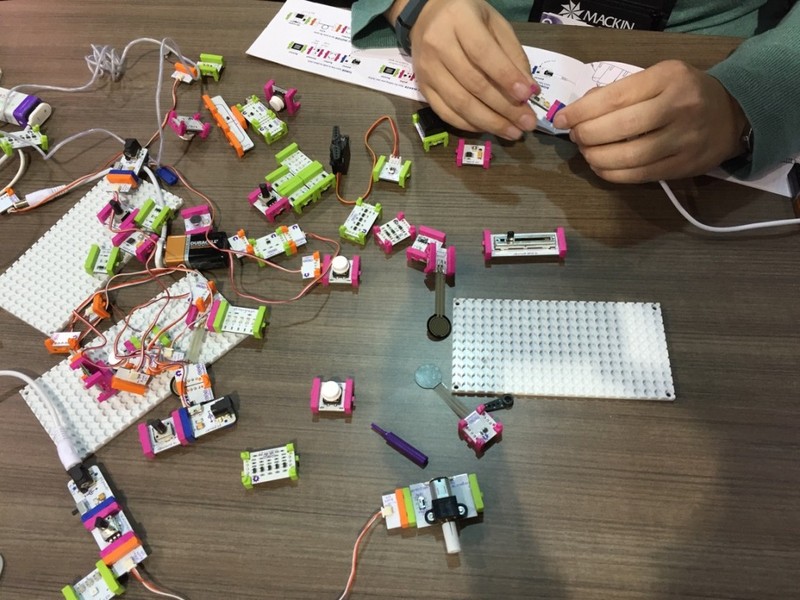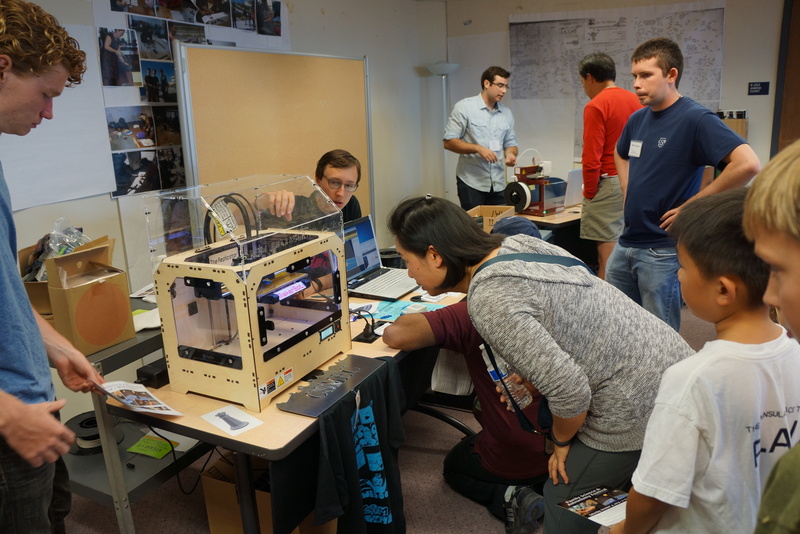e-Learning Ecologies MOOC’s Updates
Active Knowledge Making in a Makerspace
Defining a Makerspace
Makerspace is a new paradigm where learners come together at a place/space to 'make' something. What is integral to Makerspace is that it allows for people to imagine something and then use common-pool resources, expert support, peer-help etc., to make what they imagined.
What inhabits a makerspace is less important than what it DOES - a humble makerspace can have craft supplies, wood cutters, cardboard cartons.
A more sophisticated one can have 3D printers, laser cutters and robotics components. What is more important is what it attains - which is bringing a group of curious people together who share a common mindset to work in a community to take their imagination to fruition [Rendina, 2013]. Diana Rendina has a brilliant blog titled renovated learning where she defines various facets of a makerspace.
Situating it in Context
There are two important and parallel realms of makerspace - one paradigm is in the K12 learning ecosystem to make learning more intersting and useful to young learners. In this context the makerspaces are usually located in school permises and allows young explorers to learn in a way so different from the routine, boring, rote-based learning system.
See what these young kids are doing in their school makerspaces.
In an adult learning scenario, however, makerspaces are places you turn to where you could get access to expensive machines, right kind of people and a space to build something you have always imagined. Jamie Bean says a makerspace is a gym for the mind. Tinkerers joined makerspaces initially for the machines and tools and stayed back for the community they became a part of, says Bean in his TedTalk.
Future and Importance of Makerspaces
Makerspace is part of the larger Maker movement that is taking over the world. From an education stand-point its adoption is inevitable in schools and colleges for want of interesting and motivating learning ecosystem. With hierarchical learning scenarios, learners are going to be more bored in classrooms if their creativity is not tapped to actively create knowledge. Secondly, the communities where makers engage have the potential to be innovation hubs that can propel the field forward. It helps ticking several boxes in the 21st century learning goals that erstwhile learning methodologies could not. This 4 min vide by Marc Teusch explains how we could make learning better using makerspaces.
An article titled 7 essentials of Makerspace (Educause, 2013) also speaks of its use in a technology environment - the article holds the makerspace movement as critical because it helps improve self directed learning and helps learners take control of their learning. It also helps them go beyond subject boundaries and become more interdisciplinary in their approach.
How it fits into what we learnt in week 2 of the course
A makerspace fits the active knowledge making tenet of the e-learning ecology quite well due to the following reasons
- The learner in a makerspace is actively generating knowledge by doing something rather than being a passive knowledge consumer
- The learning in a makerspace is not top down or hierarchical, but lateral or horizontal with other makers in the same space
- Rather than measuring the Long Term Memory (LTM) a makerspace allows for creation of new knowledge artifacts - which are what the learners Make.
- The change of agency is evident here - the learners are the agency and a teacher is merely a troubleshooter or a consultant. The shift of agency also allows for learners in the makerspace feel more empowered as well as helps self directed / regulated learning to take palce better.
- And last but not the least, the makerspaces are cradles where knowledge societies / knowledge economies can flourish as it fosters a culture of ideation, problem solving, innovation and creativity.
References
Educause. (2013). 7 Things you should know about Makerspaces. Retrieved from https://net.educause.edu/ir/library/pdf/ELI7095.pdf
Rendina, D. (2016, April 13). Defining Makerspaces: What the Research Says. Retrieved February 18, 2017, from http://renovatedlearning.com/2015/04/02/defining-makerspaces-part-1/
What is a Makerspace? Is it a Hackerspace or a Makerspace? (2016, December 22). Retrieved February 18, 2017, from https://www.makerspaces.com/what-is-a-makerspace/




Great update! Never heard of makerspace, interesting concept and a great way to motivate students!
I feel so out of the loop! I had not heard of this Makerspace movement but need to find out more. The video of the students at Michael Wallace Elementary is amazing; the way those kids articulate what they are doing and the confidence they radiate is just incredible. I think these spaces could work in many learning instances, but for young students who are already so prone to wanting to tinker and work with physical objects, I think these spaces are very enticing and can work long-term as long as the objects and challenges change.